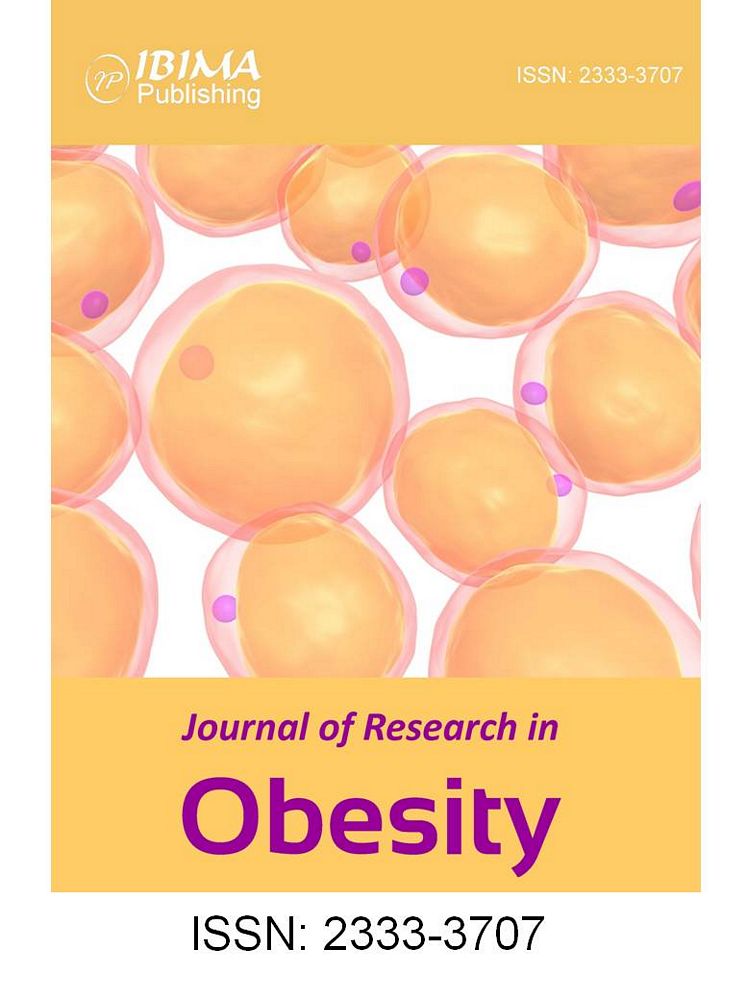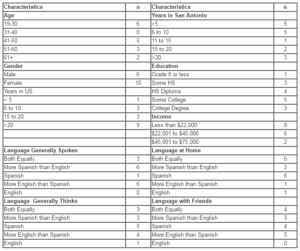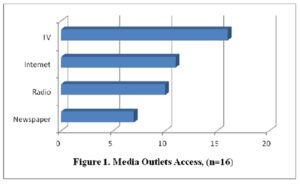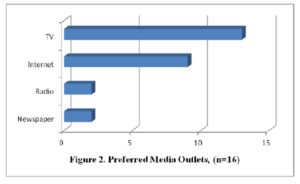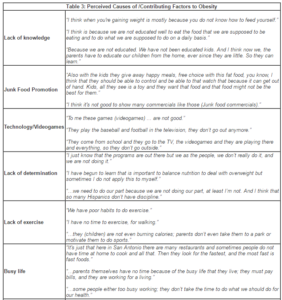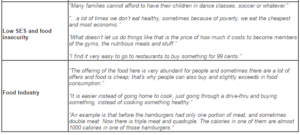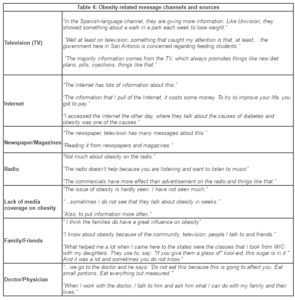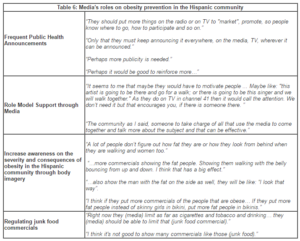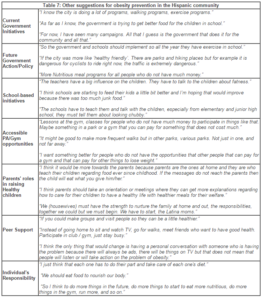Introduction
The increasing obesity prevalence in the United States (US) has caused preventable health and economic burdens, particularly affecting Hispanic communities (CDC, 2009). Hispanic adults are considered the minority group with the second-highest obesity prevalence. Obesity in Hispanics has been considered at “staggering proportions”, with Hispanic children becoming obese earlier in their lives (National Hispanic Caucus of State Legislators, 2010).
Overweight and obesity increases the likelihood of many chronic diseases such as hypertension, diabetes, heart disease, stroke and some forms of cancer (Azevedo et al., 2006). The top ten causes of death in the Hispanic community include obesity-related diseases (National Hispanic Caucus of State Legislators, 2010). Overall life expectancy for Hispanics is declining due to obesity and obesity-related health risks (National Hispanic Caucus of State Legislators, 2010). Obesity and its health-related issues cause a “disproportionate economic burden” to Hispanics, especially to those with lower socio-economic status; struggling to cover individual and family health care costs (National Hispanic Caucus of State Legislators, 2010). Thus, it highlights the urgent need for effective intervention strategies to reverse this epidemic among Hispanics.
Current research suggests that obesity is the result of complex factors including genetics, lifestyles and others (Crespo et al., 2001). Studies show that certain ethnic groups (e.g., Hispanics) have a genetic predisposition to obesity and diabetes (Hayes et al., 2007). Also, poor eating habits and the lack of physical activity are major contributors to overweight and obesity. Hispanics in the US have a unique demographic profile of low education attainment, low income, and low health insurance coverage, and are predominantly Spanish speakers (U.S. Census Bureau, 2010); which may influence their access to mainstream health information and healthful living opportunities. Moreover, research shows that Hispanics tend to perceive excess weight levels differently than non-Hispanic Whites (Duncan et al., 2011). A recent study in Texas showed that Hispanic women perceived children and women that are “chubby” or overweight as “healthy” (Ramirez et al., 2007). Misperceptions about weight status are associated with less likelihood in or less attempts at weight loss and less physical activity (Duncan et al., 2011). Lack of health information and knowledge (Ramirez et al., 2007), coupled with weight misperception presents a major barrier to lifestyle interventions, accepting emerging public policy changes, and also utilizing environmental initiatives necessary to prevent and manage obesity.
Health communication using media may play an important role informing Hispanics about obesity-related health issues. Research shows that minority groups including Hispanics heavily rely on media compared with other sources for health information (Brodie et al., 1999). Also, most Hispanics speak Spanish at home (U.S. Census Bureau, 2009). Thus, Spanish media may have a greater role than general mainstream media in educating and equipping Hispanics to live a healthier lifestyle.
Effective health communication presents a promising approach in preventing obesity among the Hispanic communities. Based on the Communication-Persuasion Model, the effectiveness of health communication efforts depends on the various inputs and their characteristics (McGuire 1989). Key communication input variables include the channel through which the health message is communicated; sources of the health message, the message itself, and audience factors. Currently, there is a paucity of research on how and to what extent the media are informing obesity-related health issues in Hispanic communities. To this end, the current study was conducted to 1) qualitatively explore the current perception of obesity among the Hispanic communities and 2) seek sights on media-related intervention strategies, in particular channels and sources of message; and the messages for obesity prevention, as well as the Hispanic communities’ perception of these messages.
Methodology
This qualitative study conducted in-depth interviews with a purposeful sample of Hispanics in the Westside of San Antonio, Texas in 2011. The Institute of Research Board at the University of Texas at San Antonio approved the study. The target research areas were primarily low-income and educationally disadvantaged Latino neighborhoods with a high prevalence of obesity and diabetes.
Study Participants
A purposeful sampling (Patton, 1990) strategy was used to recruit Hispanic participants in community settings, including Laundromats and flea markets. Efforts were made to include a heterogeneous sample of participants with diverse characteristics (e.g., gender, age and weight status (normal weight versus overweight or obese). Throughout the data collection process, 27 potential participants were approached to participate by a researcher. Interested participants were screened for study eligibility and were informed of study purposes and procedure. Adults who were over 18 years old and self-report as Hispanics were eligible to participate in this study. Upon verbal consent, the research staff continued with data collection.
Data Collection
A semi-structured facilitation guide was developed to enquire participants’ perception of information channels, sources and media influences pertaining to obesity, as well as their perspective on media’s roles on obesity prevention among Hispanics. The facilitation guide was pilot tested with three Hispanic adults and wording was modified to improve clarity.
Discussion
The aim of the study was to 1) qualitatively explore the current perception of obesity among the Hispanic communities in San Antonio, and 2) identify media-related intervention strategies including channel, sources of message and communities’ perception of existing media messages related to obesity. Results from this study showed that participants were aware of the severity and consequences of obesity as well as the contributing factors in their community. Media, especially Spanish TV, and Internet were the primary channels. Participants perceived both positive and negative messages that impacted the Hispanic communities on obesity-related health issues. Participants expressed that media could play an important role in informing, educating and motivating the Hispanic community to adopt a healthier lifestyle and reduce obesity risk.
Overall, participants in this study understood the severity, consequences and contributing factors of obesity among Hispanics. A recent qualitative study in Texas with community center workers serving children and families in a predominantly Hispanic, low-income neighborhood also reported that participants recognized obesity as a problem and identified healthy eating and physical activity to manage the problem (Chatterjee et al., 2005). Consistent with the literature (Contento, Basch & Zybert, 2003; NHCSL, 2010; Duncan et al., 2011), participants in the current study did point out that many community members were not aware of their own weight problem and called for education through the media to help address this health problem.
Consistent with other research, the current study suggested that media, especially Spanish-language TV and Internet were important health communication channels for this target population (Center for Spanish Language Media, 2011). The majority of participants in the current study had access to and preferred TV and Internet for obesity-related health messages over newspaper and radio. Brodie and colleagues (1999) also identified TV as the most common and most preferred health information outlet among all media. Another recent survey found that Hispanics who are not comfortable speaking English have lower trust and lower general mainstream media use patterns than their counterparts who are more comfortable speaking English (Clayman et al., 2010). This may imply that Spanish media are more attractive to predominantly Spanish speakers. Furthermore, the authors suggested that the poorer, less educated Hispanics might be especially receptive to messages given through aural and visual channels, including TV (Clayman et al., 2010). In a study by Vargas & De Pyssler (1999), researchers analyzed the content of major Spanish newspapers and concluded that these ethnic newspapers fell short on operating as health communication channels. Nonetheless, Spanish-language TV and Internet could serve as better channels to deliver obesity prevention messages than newspaper or radio.
Participants in the current study recognized the impact of media messages, negatively or positively, pertaining to obesity among Hispanics. On one side, participants in this study reported concern with the promotion of diet pills, diet plans and junk food on television. Recent data suggests advertisers spend more than $566 million on food, beverage and restaurant advertising through Spanish media (Brown et al., 2008). Lobbying and advocacy for junk food commercial regulations represent an important media-related strategy to prevent against obesity among the Hispanic communities.
On the positive side, participants felt that media could play an important role in informing and motivating the Hispanic community to live a healthier lifestyle and reduce the risk of obesity and diabetes. A lack of health knowledge and determination to change health behaviors were identified as important contributing factors to obesity, which are aligned with findings from another study in the Hispanic community (Ramirez et al., 2007). In addition, the unique demographic profiles of low education, low income and low health insurance coverage rate among Hispanics further the importance of media in informing, educating and motivating the community to address the obesity-related health issues. Brodie et al (1999) reported that Hispanics relied heavily on media for health information a decade ago. Although participants in the current study felt that there was insufficient media coverage in regards to obesity, they did recall positive health messages from Spanish language TV such as public health announcements promoting local physical activity events, and healthy eating messages. Participants asked for more and frequent public health announcement, positive health messaging, including TV shows that offer practical tips and healthy cooking demonstrations. The community also appreciated reliable but free health information from diverse media sources including the Internet. To tackle the lack of self-determination in this community, participants suggested that using celebrity role models as the message sources could motivate the community to take health action. For instance, having a famous artist or singer showing up to local physical activity events would motivate the less-determined community members’ to participate in such activities. These suggestions of role modeling of celebrities coincide with a recent Texas Spanish-language TV media campaign which showcased the role of models and experts that are relevant and credible to the audience to providing useful obesity prevention information and messages (Reminger et al., 2010).
Among the suggested media-related strategies, participants articulated the usage of “fat body image” to help the community recognize the seriousness of the obesity problem. This was an interesting but very sensitive topic. Based on the Health Belief Model, visual imaging of a severe disease and its consequences can be an effective strategy to heighten people’s perceived severity and vulnerability of that particular disease, thus increasing the likelihood of individuals taking preventive actions (Windschitl, 2003). A recent Dutch media campaign that used TV commercials to portray the “danger of gaining 1 kg a year” was effective in increasing obesity awareness, creating more positive attitudes and motivating individuals with lower risk perceptions and increasing efficacy for preventing weight gain (Wammes et al., 2007). However, because research has consistently suggested that obese people often experience psychological stress and social stigma (Muennig, 2008), usage of such media strategies that increase the stigma associated with “fat body imagery” should be used with caution. Nonetheless, research is critically needed to develop cultural sensitive strategies to assist the community overcome their weight misperception that hinder the effects of any obesity preventive measures in Hispanics.
Although media-related intervention is important, it is only one type of obesity prevention strategy for Hispanics. Without prompt, participants in the current study were able to identify multiple risk factors at the micro and macro-levels that were perceived as contributors to the obesity problem in the Hispanic community. It is encouraging that participants understood that obesity was a multifaceted health problem caused by a variety of factors. In addition to cultural foods and unhealthy eating habits, busy life and lack of exercise, participants perceived the food industry as a major contributor to obesity, and regulation through policy would help the community to engage in healthier eating habits. They also perceived that poverty and food insecurity hindered people’s ability to make healthy food choices. Participants articulated a wide-array of solutions to address the obesity epidemic in their community, which were in line with CDC’s comprehensive obesity strategies (Keener et al., 2009). Participants appreciated the on-going government and school-based obesity prevention efforts underway in the San Antonio community. However, they also believed that more preventive actions are needed. Government, schools and the media were identified as key entities who could offer health education and programming to increase the community’s knowledge of practicing healthier habits. Moreover, health-friendly environments such as communities with parks, sidewalks and affordable gym classes would facilitate active living. At an individual and interpersonal level, participants pointed out that personal responsibility, parental role modeling and peer support play significant roles in the battle against obesity.
While the current study provided great insight about the perception of obesity among Hispanics, there were several limitations associated with this qualitative study. First, although a purposeful sampling strategy was used, like other qualitative studies of this nature, participants may have self-selected to participate in a study because they have a keen interest and substantial knowledge about health issues; their opinion may not reflect the general publics’ opinion. Secondly, although this study made every effort to minimize bias by avoiding leading questions, social desirability may have still influenced participant responses. In addition, there was a more significant amount of females than males participating in this study. The length of living in the United States could also have influenced participants’ responses during the interviews. Lastly, we did not include information about the language of preference when using media in the demographic questionnaire. Nonetheless, these findings generated rich data to inform readers on methods for developing obesity prevention strategies and may be relevant and applicable to communities with similar settings and characteristics.
Conclusions and Implications
Hispanic residents are concerned with obesity and were able to suggest potential solutions to address the escalating obesity problem. Spanish media represent a promising venue to inform, educate and motivate the Hispanic community to live a healthier lifestyle and thus reduce the risk of obesity and diabetes. Future media-related obesity prevention strategies should consider using TV and Internet as the main channels of health communication, utilizing celebrities as message sources in educating the community about living a healthy lifestyle, and focusing on frequent public health announcements of local government initiatives, programs and events; as well as advocating regulation on junk food commercials. Future research is needed to analyze the current health communication content regarding obesity in major Spanish-language media sources. Also, future research using a quantitative approach is needed to confirm the finding from the current qualitative study. Content analysis of the current obesity-related health information in major Spanish-language media sources will help better develop effective health communication through the media. In addition, research is also needed to explore the potential effect of “fat body imagery” on changing the Hispanic community’s weight perception. Such studies should be conducted with caution to avoid psychological issues in the community.
Acknowledgment
Authors would like to acknowledge the insightful contributions from Dr. Fernando Guerra, Timothy Jones, David Bustos, Arely Perez, Daisy Escamilla, Rosalie Aguilar, David Castillo, Christian Umana, & the Department of Health and Kinesiology at UTSA.
References
1.Azevedo, G. D., Duarte, J. M., Souza, M. O., Costa-E-Silva, T. D., Soares, E. M., and Maranhao, T. M. (2006) “Menstrual cycle irregularity as a marker of cardiovascular risk factors at postmenopausal years,” Arquivos Brasileros de Endocrinologia y Metabologia, 50 876-883.
Publisher – Google School
2.Brodie, M., Kjellson, N., Hoff, T. and Parker, M. (1999) “Perceptions of Latinos, African Americans, and whites on media as a health information source” Howard Journal of Communications,” 10 (3) 147-167.
Publisher – Google School
3.Brown, K., Johnson, B. and Morrison, M. (2008) “Hispanic fact pack 2008 edition: Annual guide to Hispanic marketing and media,” Advertising Age. [Online]. [Retrieved August 28, 2011], http://adage.com/images/random/datacenter/2008/hispfactpack08.pdf
4.Center for Disease Control and Prevention (CDC). (2009) “Morbidity and mortality weekly report: Differences in prevalence of obesity among black, white, and Hispanic adults in the US, 2006-2008,” [Online]. [Retrieved May 28, 2011], http://www.cdc.gov/mmwr/preview/mmwrhtml/mm5827a2.htm
5.Center for Spanish Language Media. (2010) “The state of Spanish language media: 2010 annual report,” [Online]. [Retrieved May 28, 2011], http://www.spanishmedia.unt.edu/spanish/downloads/annualreport/Sofslm2010.pdf
6.Chatterjee, N., Blakely, D. E. and Barton, C. (2005) “Perspectives on obesity and barriers to control from workers at a community center serving low-income Hispanic children and families,” Journal of Community Health Nursing, 22 (1) 23-36
Publisher – Google School
7.Clayman, M. L., Manganello, J. A., Viswanath, K., Hesse, B. W. and Arora, N. K. (2010) “Providing health messages to Hispanics/Latinos: understanding the importance of language, trust in health information sources, and media use,” Journal of Health Communication, 15 (3) 252-263
Publisher – Google School
8.Contento, I. R., Basch, C. and Zybert, P. (2003) “Body image, weight, and food choices of Latina women and their young children,” Journal of Nutrition Education and Behavior, 35 236-248
Publisher – Google School
9.Crespo, C. J., Smit, E., Carter-Pokras, O. and Andersen, R. (2001) “Acculturation and leisure-time physical inactivity in Mexican American adults: results from NHANES III, 1988-1994. American Journal of Public Health, 91, 1254-1257
Publisher – Google School
10.Duncan, D. T., Wolin, K. Y., Scharoun-Lee, M., Ding, E. L., Warner, E. T., Bennett, G. G. (2011). Does perception equal reality? Weight misperception in relation to weight-related attitudes and behaviors among overweight and obese US adults. International Journal of Behavioral Nutrition and Physical Activity, 8(20), 1-9
11.McGuire W. (1989), Theoretical foundations of campaigns, InPublic Communication Campaigns, Sage Publications, Rice, R. and Atkin, C. (ed) pp. 43—65. Newbury Park, California
12.Hayes, M. G., Pluzhnikov, A., Miyake, K., Sun, Y., Ng, M. C., and Roe, C. A. (2007) “Identification of type 2 diabetes genes in Mexican Americans through genome-wide association studies,” Journal of Diabetes, 56 3033-3044
Publisher – Google School
13.Keener, D., Goodman, K., Lowry, A., Zaro, S. and Kettel Khan, L. (2009) “Recommended community strategies and measurements to prevent obesity in the United States: Implementation and measurement guide,” [Online]. [Retrieved June 21, 2011], http://www.cdc.gov/obesity/downloads/community_strategies_guide.pdf
14.Muennig, P. (2008) “The body politic: The relationship between stigma and obesity-associated disease,” BMC Public Health, 8 128
Publisher – Google School
15.National Hispanic Caucus of State Legislators. (2011) “Hispanic obesity: an American crisis,” [Online]. [Retrieved October 13, 2011], http://nhcsl.org/Hispanic-Obesity-An-American-Crisis.pdf
16.Patton M. Q. (1987). How to use qualitative methods in evaluation, Sage Publications, London
17.Patton, M. Q. (1990). Qualitative evaluation and research methods (2nd ed.), Sage Publications, Newbury Park, CA
18.Ramirez, A. G., Chalela, P., Gallion, K. and Velez, L. F. (2007) “Energy balance feasibility study for Latinas in Texas: a qualitative assessment,” Journal of Preventive Chronic Diseases, 4 (4) 1-12
19.Reininger, B. M., Barroso, C. S., Mitchell-Bennett, L., Cantu, E., Fernandez, M. E. and Gonzalez, D. A. (2010) “Process evaluation and participatory methods in an obesity-prevention media campaign for Mexican Americans,” Journal of Health Promotion Practice, 11 347-357
Publisher – Google School
20.U. S. Census Bureau. (2009) “Percentage of Hispanics by state, city, county or zone,” [Online]. [Retrieved May 23, 2011], http://factfinder.census.gov/servlet/TMSelectedDatasetPageServlet?_lang=en
21.U. S. Census Bureau. (2009) “Language Spoken at Home,” [Online]. [Retrieved May 23, 2011], http://factfinder.census.gov/servlet/STTable?_bm=y&-geo_id=01000US&-qr_name=ACS_2009_1YR_G00_S1601&-
ds_name=ACS_2009_1YR_G00_&-_lang=en&-redoLog=false
22.U. S. Census Bureau. (2011) “The Hispanic Population 2010,” [Online]. [Retrieved May 23, 2011], http://www.census.gov/prod/cen2010/briefs/c2010br-04.pdf
23.Vargas, L.C. and De Pyssler, B.J. (1999) “U.S. Latino newspapers as health communication resources: A content analysis,” Howard Journal of Communications, 10 (3) 189-205
Publisher – Google School
24.Ver Ploeg, M. L., Chang, H. and Lin, B. (2008) “Over, under, or about right: Misperceptions of body weight among food stamp participants,” Journal of Obesity, 16 2120—2125
Publisher – Google School
25.Wammes, B., Oenema, A. and Brug, J. (2007) “The evaluation of a mass media campaign aimed at weight gain prevention among young Dutch adults,” Journal of Obesity, 15 2780-2789
Publisher – Google School
26.Windschitl, P. D., Martin, R. and Flugstad, A. R. (2003) “Context and the interpretation of likelihood information: The role of intergroup comparisons on perceived vulnerability,” Journal of Personality and Social Psychology, 82 (5) 742—755
Google School



